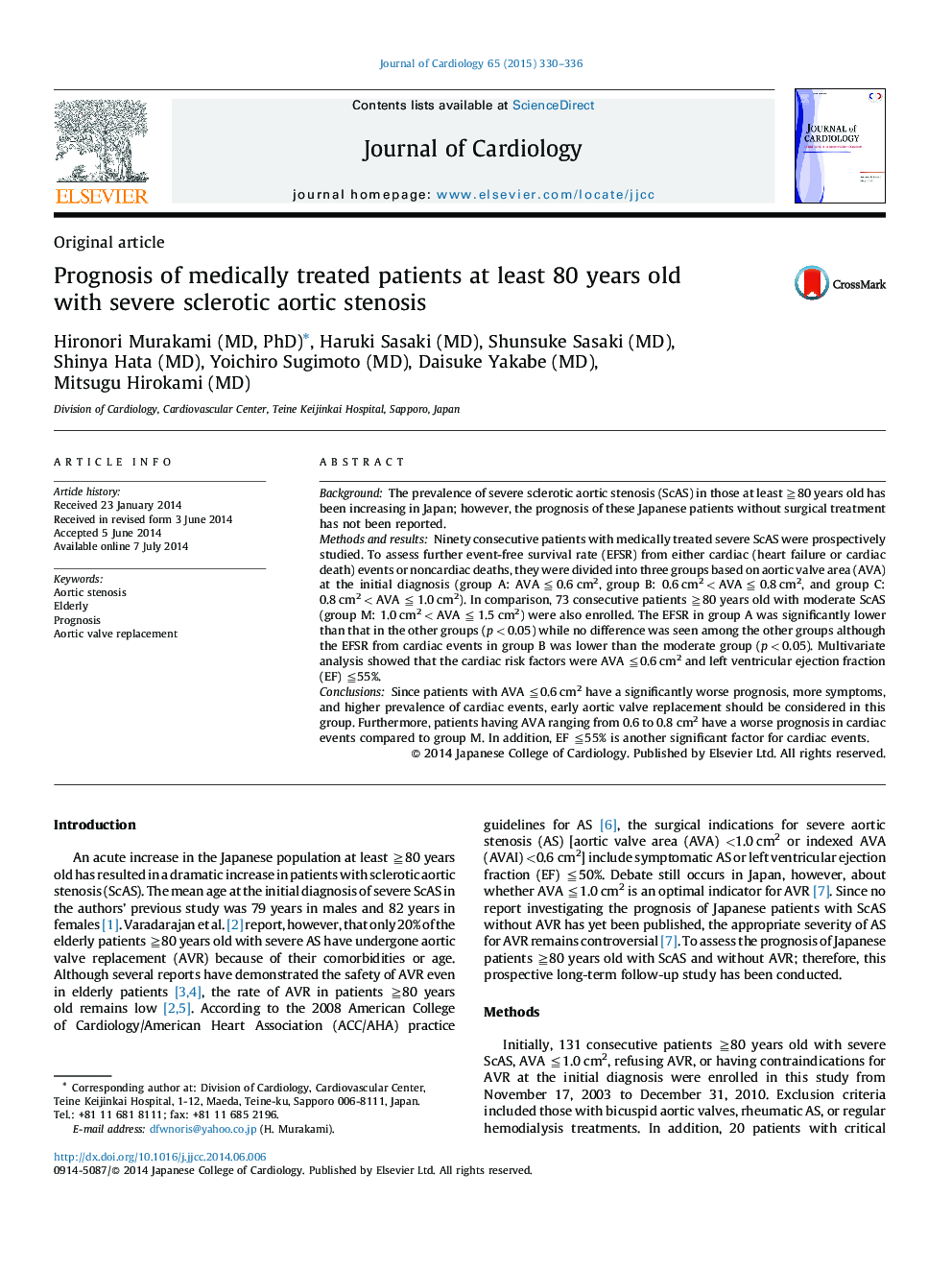| Article ID | Journal | Published Year | Pages | File Type |
|---|---|---|---|---|
| 2963071 | Journal of Cardiology | 2015 | 7 Pages |
BackgroundThe prevalence of severe sclerotic aortic stenosis (ScAS) in those at least ≧80 years old has been increasing in Japan; however, the prognosis of these Japanese patients without surgical treatment has not been reported.Methods and resultsNinety consecutive patients with medically treated severe ScAS were prospectively studied. To assess further event-free survival rate (EFSR) from either cardiac (heart failure or cardiac death) events or noncardiac deaths, they were divided into three groups based on aortic valve area (AVA) at the initial diagnosis (group A: AVA ≦ 0.6 cm2, group B: 0.6 cm2 < AVA ≦ 0.8 cm2, and group C: 0.8 cm2 < AVA ≦ 1.0 cm2). In comparison, 73 consecutive patients ≧80 years old with moderate ScAS (group M: 1.0 cm2 < AVA ≦ 1.5 cm2) were also enrolled. The EFSR in group A was significantly lower than that in the other groups (p < 0.05) while no difference was seen among the other groups although the EFSR from cardiac events in group B was lower than the moderate group (p < 0.05). Multivariate analysis showed that the cardiac risk factors were AVA ≦0.6 cm2 and left ventricular ejection fraction (EF) ≦55%.ConclusionsSince patients with AVA ≦0.6 cm2 have a significantly worse prognosis, more symptoms, and higher prevalence of cardiac events, early aortic valve replacement should be considered in this group. Furthermore, patients having AVA ranging from 0.6 to 0.8 cm2 have a worse prognosis in cardiac events compared to group M. In addition, EF ≦55% is another significant factor for cardiac events.
